the course and the holes
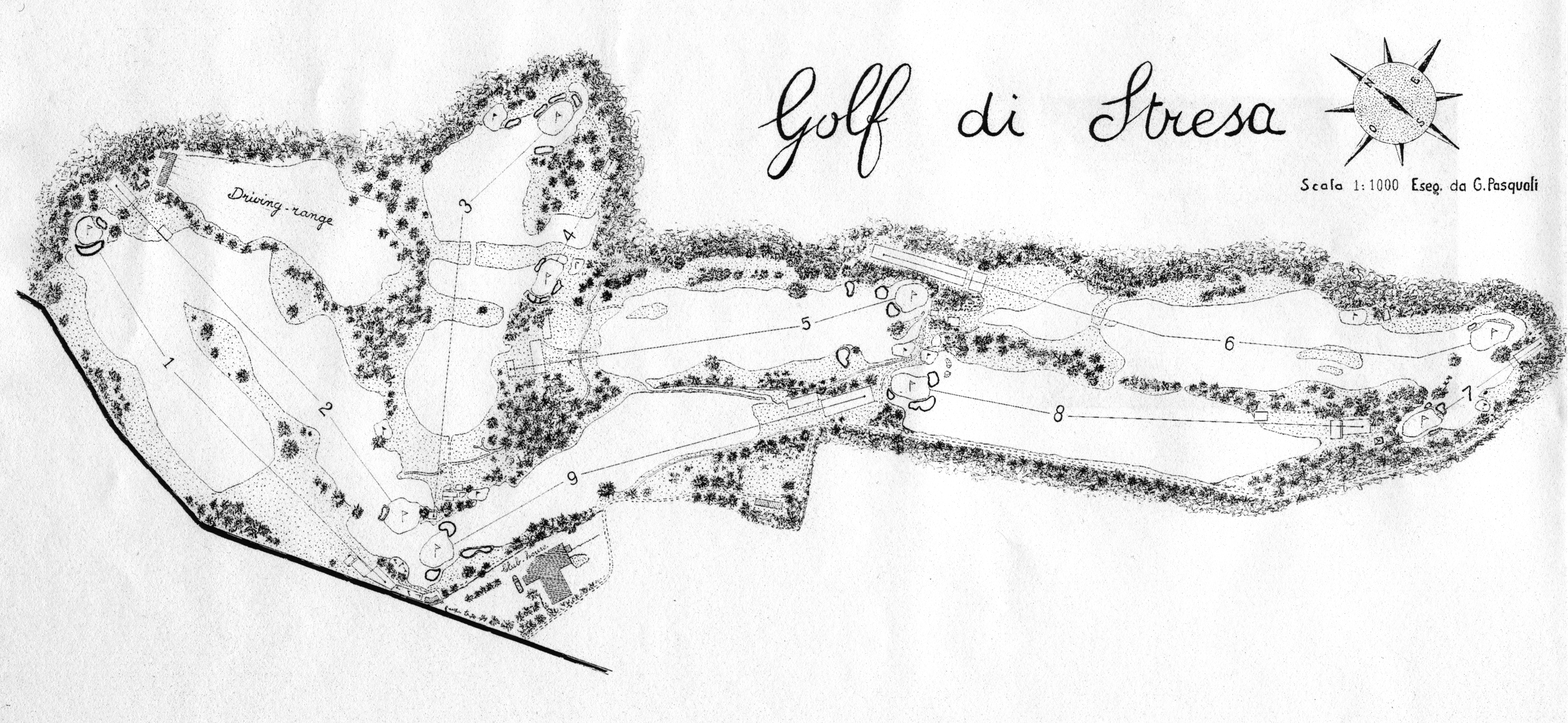
hole 1/10
Hole 1/10 Par 4
Men: meters 353
Women: meters 315
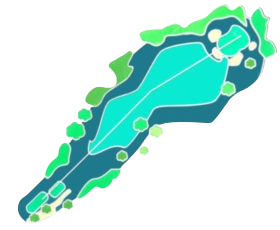
general description
Downhill par four, with greens positioned slightly to the right of the line moving from the starting tee. The tee shot finishing area consists of a wide and clearly visible terracing, bordered on the right by characteristic natural mount with birch trees; on the left the boundary of the playing area is indicated by a row of birch trees.
Second shot from the top, with a drop of about 25 meters; players who have placed their tee shot on the terracing or passed it will enjoy a direct view of the green, which must be reached by flight, as it is protected by five bunkers.
how to play hole 1-10
The tee shot between 180 and 225 yards in length will allow the second shot to be played with feet flat on the terracing, and those who reach the edge of the terracing, set at about 215/225 yards (175/185 for ladies), will have a direct view of the green. Starting shots of less than 200/210 yards (160/170 for the ladies) will test the sensibilities of players, who will have to take as a reference point one of the trees towering from behind the green; this will be the first of many decisions about playing strategy that the Alpine invites: either risk flying to the green or settle for an approach shot for a comfortable approach.
Players with more power, as they pass the edge of the terrace set at about 225 yards (185 for ladies), will benefit from the downhill slope that will bring their drive much closer to the green; the second shot will be less than 100 yards, but beware! The ball will always be higher than the feet.
The green is two-tiered, with the second not very deep; when the shaft is placed in this elevated area, absolute accuracy and excellent ability to maneuver the approach shot will be needed.
dangers
The entire left side of hole 1-10, all the way behind the green, is lined by the out-of-bounds.
From the starting tee, the margin of play is really very wide, and only those players who attempt a powerful drive over the terracing set at 225 yards (185 for ladies) will run the serious danger that their shot (markedly wrong) will leave the playing area; less powerful players, on the other hand, will have nothing to fear. Watch out on the right, too: although there are no out-of-bounds, a hard, compact heather grows on the wide natural mount, which from the men’s tee is not visible, forcing a sand iron to put the ball back in play.
The danger on the second shot is the out of bounds behind the green; the lay of the land, elevated for a few feet, is such that even a few botched approaches can be “saved.”
curiosity
In the arrival area of the drive, on the right at the foot of the natural mount is a juniper bush: ‘l zanivul (the zanivol) the origin of whose history is lost so far back in time that it has not been reconstructed (a privilege that, given its history now approaching ninety years, few fields in our Bel Paese can boast); it was so called by the many caddies, who for years accompanied the game of the frequenters of the club. If, after playing a drive too far to the right, you do not spot the ball in the nearby rough or heather, be sure to take a look inside our “zanivul,” being careful not to sting yourself.
hole 2/11
Hole 2/11 Par 4
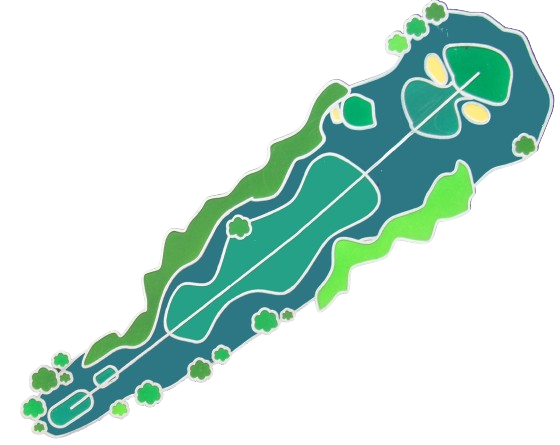
general description
Slightly uphill par four, with greens placed exactly along the line moving from the starting tee.
Raised starting tee (sometimes the ladies start, however, from the lower tee) with the drive end zone consisting of a wide plane, rising gradually and slightly; wide depression before the green that is overflown by good second shots or picking up those with insufficient carry, testing the short game for the endless possibilities of ball placement, however, always well playable.
Flat green, except for the slightly uphill entrance, protected by a bunker in the left front and one on the right side.
how to play the 2-11 hole
The finish area of the drive is not visible, but this is not a problem since, once past the mound located about 100 meters from the tee, the landing zone extends laterally for at least 50 meters, narrowing to about 30, for longer drives (over 210 meters for men and over 180 for ladies). The landmarks are: on the right the pair of birch trees located 230 yards from the tee (190 yards for the ladies); on the left the pine tree, which stands exactly on the out-of-boundary line and allows identification of an imaginary point located at least 15 to 20 yards to the right of it to locate the center of the fairway. The left side of the course is preferred, as it always allows you to see the green; the further to the right you move, the more your view will be obstructed by a natural mount.
The second shot may be played with feet level if the drive has been less than 180 meters (150 meters for ladies); drives up to 200 meters (170 meters for ladies) will have to contend with a slight uphill slope and the characteristic undulations of the course; for longer drives the lie gradually flattens out.
dangers
The left side is bordered by the out of bounds but, because of the favorable bank angle, only the most serious errors run the risk of being punished with the out.
On the second shot absolutely forbidden to miss to the left of the green because of the trees placed to protect the tee of hole 3.
curiosity
Since the finishing tee shot area is not visible, you will need to check the monitor located on the right side of the men’s starting tee, which allows you to see the entire fairway; pull only when the players ahead have crossed the line visible on the monitor.
hole 3/12
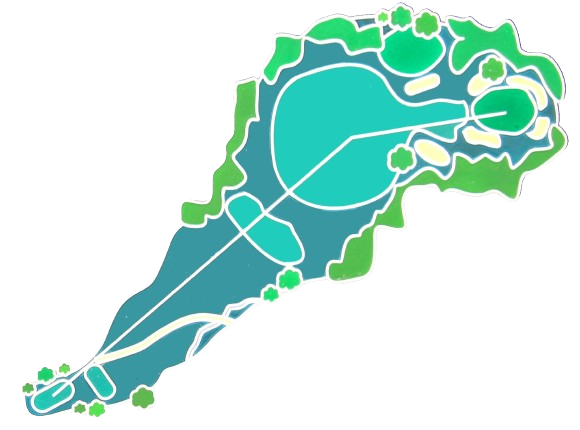
general description
Downhill par four, with accentuated dog leg to the right in the last part of the hole, which will test skill on the short game.
For more powerful players, no drive; if the tee shot is correct, the second shot will require a small wedge. Beware of the green, however: if the approach shot is even two meters long and is not “saved” by the two bunkers, the out is virtually certain.
how to play the 3-12 hole
Powerful players will be able to safely use 4-iron to 5-wood; in fact, only 170 meters of carry (140 meters for ladies) are needed to make the steep drop do all the work of carrying the ball. Less powerful players can reach a wide plateau that interrupts the descent, so they can play a shot to the green of about 130 yards.
The tee shot is a blind shot to be played between the canopy of the beech tree glimpsed on the left and the birch tree clearly visible from the starting area on the right; set a point ten yards to the right of the canopy of the beech tree and you have the ideal line.
Shots too far to the left of the beech canopy risk the out or the bunker; those to the right will not enjoy a direct view of the green and will force the player either to lay up or to contrive a difficult shot either over or through the trees protecting the green.
The green is level, bordered by four bunkers.
dangers
curiosity
hole 4/13
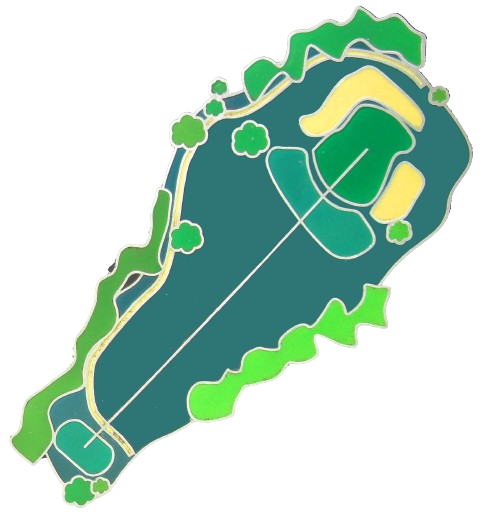
general description
Short, uphill par 3 with marked elevation gain, with long greens, bordered by bunkers. Entrance to the green free of obstacles and pitfalls.
how to play the 4-13 hole
dangers
Shots that are too short, especially in dry field conditions, run the risk of returning toward the hitter for several meters, while errant shots to the right will find the bunker.
5/14 hole
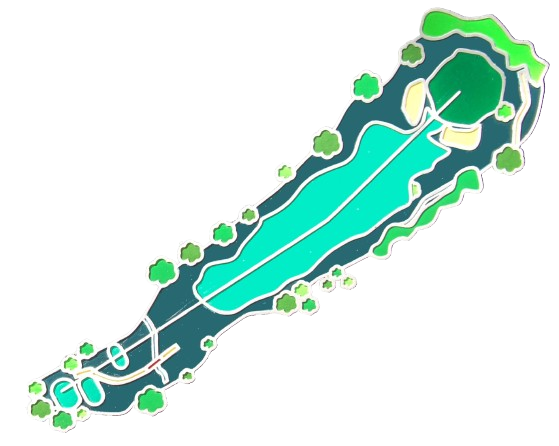
general description
Powerful players will be able to engage in a mutual challenge to see who can get closest to the green; less powerful players will be able to play their starting shot quietly while enjoying the width of the fairway, while novices will fear the ditch positioned below the starting tee, where a small rivulet flows, constituting a frontal water obstacle. Preserving the natural course of the ground makes the second shot always different: in fact, it is possible to play ten tee shots of similar length, and you will have the opportunity to play the second shot in ten different ways, from the shot with your feet in perfect level, to the shot with the ball higher than your feet, to the shot with the ball lower than your feet.
Green that slopes slightly from the bottom toward the entrance.
how to play the 5-14 hole
Unless they want to try to get as close to the green as possible (some even manage to reach it), the more powerful players can leave their drives in the bag and place the tee shot with a 3-wood or utility club at a distance of 130 to 80 yards from the green, so that they have a full shot with a better chance of stopping the ball; less powerful players, on the other hand, can take advantage of the extreme width of the fairway with their drives. Shots too close to the green, especially with short shafts, will put players in difficulty, as they will have little room to stop their approach, and this is also due to the nature of the green, which is quite hard in the first part.
If one does not possess excellent ball control, the second shot should be played to the middle of the green, without getting caught up in the eagerness for birdie, especially if the shaft is placed on the right side; it will be enough to miss by a couple of meters to see the ball leave the green and move away from it, leaving an approach as beautiful to imagine as it is complicated to execute.
dangers
The entire left side is bordered by the out of bounds (not visible), but only extraordinarily crooked shots will be punished; beware, however, of powerful players unleashing the drive, because at 220 yards the out line approaches the fairway.
As for the second shot, when in doubt, choose one less stick: shots that are too long would end up on the tee below on hole 6-15 complicating the closing of the hole.
hole 6/15
Hole 6 Par 5
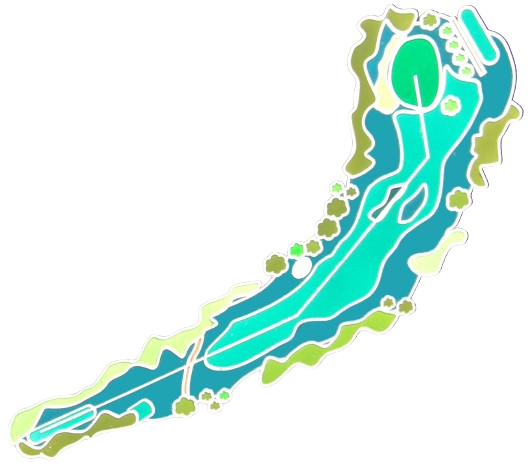
general description
how to play the 6-15 hole
Unless they want to try to get as close to the green as possible (some even manage to reach it), the more powerful players can leave their drives in the bag and place the tee shot with a 3-wood or utility club at a distance of 130 to 80 yards from the green, so that they have a full shot with a better chance of stopping the ball; less powerful players, on the other hand, can take advantage of the extreme width of the fairway with their drives. Shots too close to the green, especially with short shafts, will put players in difficulty, as they will have little room to stop their approach, and this is also due to the nature of the green, which is quite hard in the first part.
If one does not possess excellent ball control, the second shot should be played to the middle of the green, without getting caught up in the eagerness for birdie, especially if the shaft is placed on the right side; it will be enough to miss by a couple of meters to see the ball leave the green and move away from it, leaving an approach as beautiful to imagine as it is complicated to execute.
dangers
hole 15 par 4
general description
dangers
7/16 hole

general description
Wide green with appreciable slope rising gradually from the entrance to the bottom.
how to play the 7-16 hole
dangers
curiosity
8/17 hole
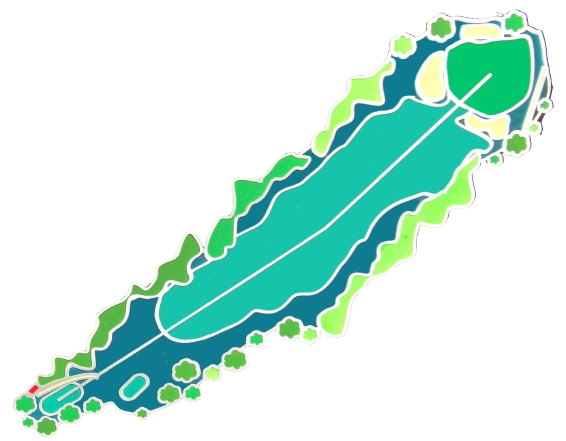
general description
Wide green, protected by three bunkers, two of which leave only a few feet of passage for shots with insufficient flight.
how to play the 8-17 hole
From the starting tee take good aim and set an ideal spot a little to the left of the centerline of the fairway, so that the natural left-right slope of the terrain leads your ball exactly into the center of the slope.
The second shot will almost always be with ball slightly lower than feet and must reach the green on two unaccented levels; always prefer the left side of the green, as on the right the bank slopes quickly and markedly.
The green is wide with a first, shallow level at the entrance and a second level, slightly elevated and occupying four-fifths of the length, with a barely perceptible slope that slopes down from the bottom toward the entrance.
dangers
hole 9/18
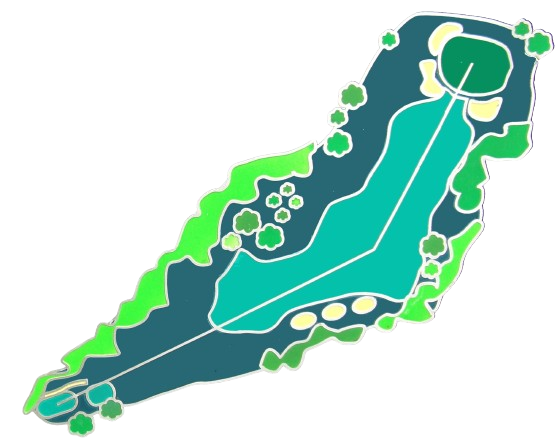
general description
how to play the 9-18 hole
On the second shot, in view of the right-left course layout, address yourself well in the direction of the green so as to avoid the frequent line errors on the right, where you will find dense pine trees or the green’s bunker to pick up misdirected shots; this is especially true for less powerful players, who are forced to use very low irons or even woods to approach the green.
Players able to reach the green with their second shot will also need to pay attention to the length of their shots, because the out-of-bounds, especially on the left side, are located just past the bunker a few yards from the green.
The green slopes down from the bottom toward the entrance and is traversed in its half by a small, gentle step; watch out for the right side of the green, where in nap increases the speed of downhill putts and slows down uphill ones.
dangers
On the second shot, especially for players with higher handicaps, the danger is misalignment, with the group of pine trees positioned to the right of the course ready to receive their balls; once you end up down there remember that the rule regarding the unplayable ball optionalizes the two-stick drop, which may not be enough to get you out of the way.

